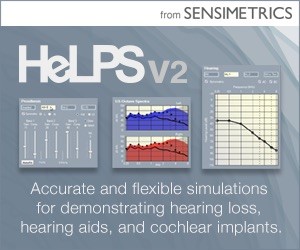Editor’s Note: Today’s post addresses a pervasive problem in our digital world: knowing when it’s okay, and when it isn’t, to re-use materials found online. This topic has been addressed before at HHTM, and the great information found in today’s post applies to students as well as professionals in academics, clinical practice, and nearly any industry.
The information provided is not intended to serve as legal guidance or advice–readers are encouraged to consult legal counsel for advice on a specific issue or situation they may be encountering.
By Cathy Sarli and Michael Valente
Advances in digital technology coupled with the transformation of traditional publishing models afford audiologists many opportunities to discover, download and disseminate material to share with colleagues, fellow students, and consumers as well as use for professional and teaching activities. These practices pose ethical and legal repercussions related to copyright, patient privacy and plagiarism.
What follows is a discussion of copyright, patient privacy and recommended practices for reuse of print and digital works.
What is Copyright?
Copyright law{{1}}[[1]]Title 17, U. S. Code[[1]] in the US protects original works–published or unpublished–in any medium (print or digital). Examples of works include literary and scholarly works, email correspondence, letters, website content, audiovisuals, sound recordings, photographs/images, graphics, etc., in any format. Using copyrighted material without permission may constitute copyright infringement and result in significant civil and even criminal penalties.
To Avoid Copyright Infringement, Audiologists Should Use Materials From:
- The Public Domain
A work in the public domain is a work that is no longer protected by U.S. copyright law because copyright protection has expired. Works published before 1923 in the United States and works created by U.S. government employees as part of their official duties are in the public domain.
The copyright term for works created after 1923 depends upon a number of factors, including date of publication and whether the copyright was renewed. Generally, works created after 1978 enjoy protection for the life of the creator plus 70 years.
A work licensed under one of the six Creative Commons licenses typically permit reuse of material as long as the terms of the license are followed and attribution is noted.
There are exceptions to copyright. Fair Use is one of the most commonly-used exceptions to copyright. The copyright law contains a non-exclusive list of purposes for which the use of copyrighted works would be considered “fair,” such as criticism, comment, news reporting, teaching, scholarship or research.
Factors to Determine Whether a Proposed Use is Fair:
- The purpose and character of the use, including whether such use is of a commercial nature or is for nonprofit educational purposes.
- The nature of the copyrighted work.
- The amount and substantiality of the portion used in relation to the copyrighted work as a whole.
- The effect of the use upon the potential market for or value of the copyrighted work.
Consider using the Fair Use Analysis Worksheet to determine if your intended use of material falls under fair use.
Another exception to copyright is use of facts and ideas. Ideas and facts are not copyright protected and may be used without permission.
If the intended use of the material is copyright protected and the proposed use is does not fall under fair use, permission from the owner of the material is required for reuse. When in doubt, seek permission.
Attribution should always be noted.
Attribution is not a substitution for permission.
Patient Privacy
Material that contains Personally Identifiable Information (PII) should not be shared for any purpose with the exception of the provision of healthcare.
Plagiarism
Plagiarism is the act of taking ideas or expression (including paraphrasing) from another source without proper attribution.
*Stay tuned next week for Part 2.
Cathy C. Sarli, MLS, AHIP, is the Senior Librarian of Evaluation Services for the Translational Research Support Division at Becker Medical Library, Washington University School of Medicine in St. Louis. She specializes in evaluation of scholarly productivity and impact, publishing issues, copyright and compliance with public access mandates such as the NIH Public Access Policy. Cathy serves as the project lead for The Becker Model for Assessment of Research Impact and is a member of the Tracking and Evaluation Team for the Washington University Institute of Clinical and Translational Sciences (ICTS).
Michael Valente, Ph.D., is Professor of Clinical Otolaryngology and Director of Adult Audiology at Washington University School of Medicine. In his position, Mike is active in the clinic two days a week, conducts research, teaches a graduate course in amplification and administers the Division of Adult Audiology. He received his Ph.D. from the University of Illinois at Urbana-Champaign in 1975. His interests include spending time with his beautiful wife Maureen who is Director of Audiology Studies at Program in Audiology and Communication Sciences (PACS) at Washington University. Mike enjoys travel, jogging, and reading (non-fiction).
feature image courtesy of copyrightsworld








